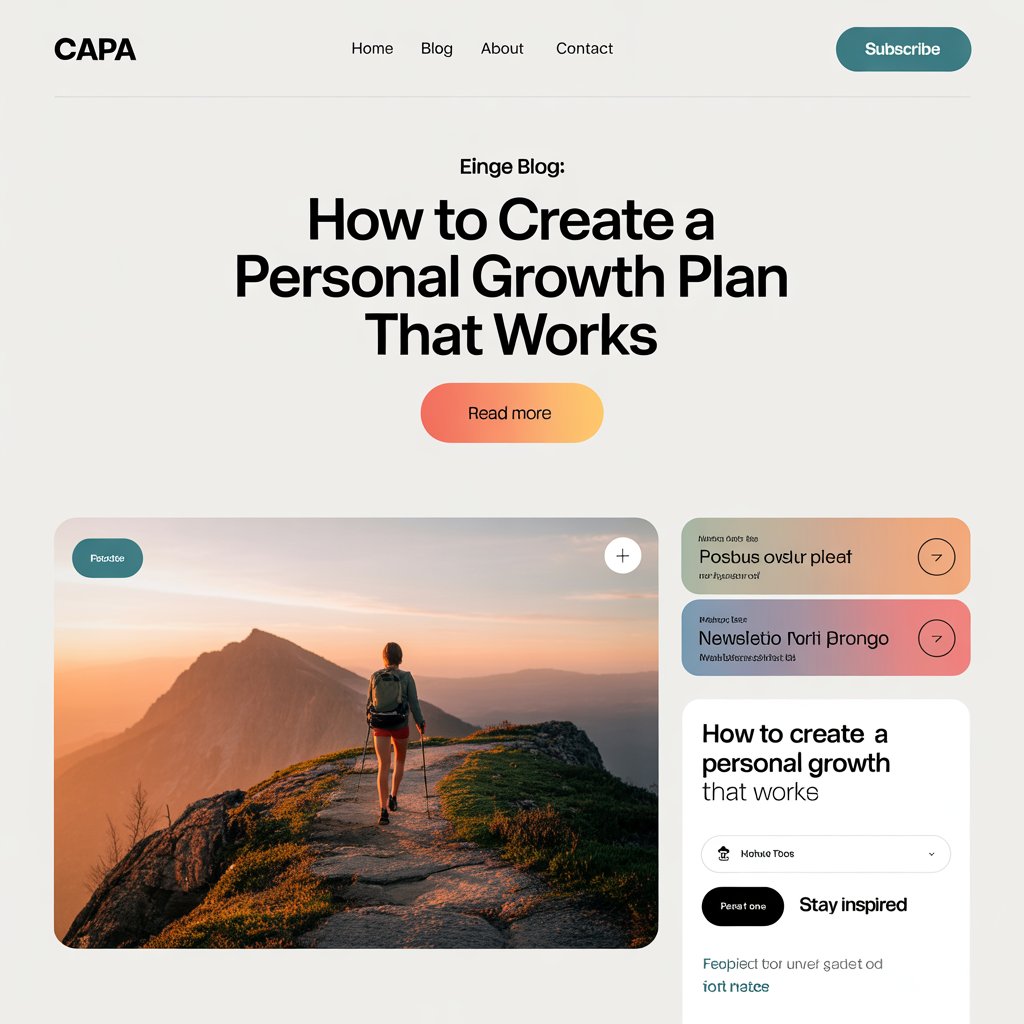Personal growth doesn’t happen by accident — it happens through intention. If you want to evolve, improve your habits, build confidence, or reach your goals, having a clear personal growth plan gives you direction, clarity, and motivation.
This article will help you create a personal growth plan that’s realistic, customized to your life, and designed for long-term success.
What Is a Personal Growth Plan?
A personal growth plan is a roadmap for becoming the best version of yourself. It outlines what areas you want to improve, why it matters, and how you’ll do it consistently.
It gives your efforts structure — and transforms vague hopes into actionable goals.
Step 1: Reflect on Where You Are Now
Growth starts with self-awareness.
Ask:
- What are my strengths?
- What areas need improvement?
- What habits or mindsets are holding me back?
- What do I value most in life?
Use journaling or self-assessment tools to gain insight.
Step 2: Define Your Vision
What does your ideal self or life look like?
Try:
- Writing a vision statement (e.g., “I live a balanced, creative life where I feel energized and intentional”)
- Visualizing your life in 1–3 years
- Identifying how you want to feel daily
This vision becomes your guiding compass.
Step 3: Choose Focus Areas
Don’t try to improve everything at once. Select 2–4 areas to work on.
Examples:
- Health
- Relationships
- Finances
- Career
- Emotional well-being
- Confidence or mindset
Focused effort creates meaningful change.
Step 4: Set SMART Goals
Turn your growth areas into clear goals.
SMART means:
- Specific: Know exactly what you want
- Measurable: Track your progress
- Achievable: Keep it realistic
- Relevant: Align with your values
- Time-bound: Set deadlines
Example: “Read 12 personal development books this year.”
Step 5: Create an Action Plan
Break your goals into habits and tasks.
For each goal:
- What do I need to do weekly?
- What tools or resources will help?
- When will I work on it?
Consistency beats intensity.
Step 6: Track and Review Regularly
Growth is a cycle of action and reflection.
Try:
- Weekly check-ins with your goals
- Monthly reflections: What worked? What didn’t?
- Habit trackers, journals, or apps like Notion
Reviewing keeps you accountable and adaptable.
Step 7: Celebrate Milestones
Recognize and reward your progress — no matter how small.
- Reflect on lessons learned
- Treat yourself for consistency
- Share your wins with someone supportive
Celebration builds motivation.
Step 8: Stay Flexible and Evolve
Your goals and needs may change — and that’s okay.
- Revisit your plan every 3–6 months
- Adjust goals based on your current season
- Don’t aim for perfect, aim for progress
Growth is a journey, not a destination.
Design the Life You Want
A personal growth plan isn’t about being someone else — it’s about becoming more you. With intention, reflection, and daily action, you can live a more meaningful, empowered life.
Start now. Choose one area to grow. Make one small change. And keep going — your future self will thank you.
